Towards the end of February 2018, ICOM and INTERCOM held the annual conference in Kolkata which was hosted by Kolkata Center for Creativity. INTERCOM is the international committee of ICOM that brings together experts of museum management to discuss contemporary issues relevant to museums and enhancing the visitor experience. Special credit goes to Ms Reena Dewan, President of ICOM India, who chaired the Conference and worked tirelessly towards making this event the great success that it was.
The theme for the conference this year was “Entrepreneurial Management”. How to introduce more entrepreneurial inventiveness in future museum management and some of the successful implementations from the past were the main topics on the agenda. Also, discussed were, issues faced by museums related to funding and drawing a bigger audience through enhancing the visitor experience.
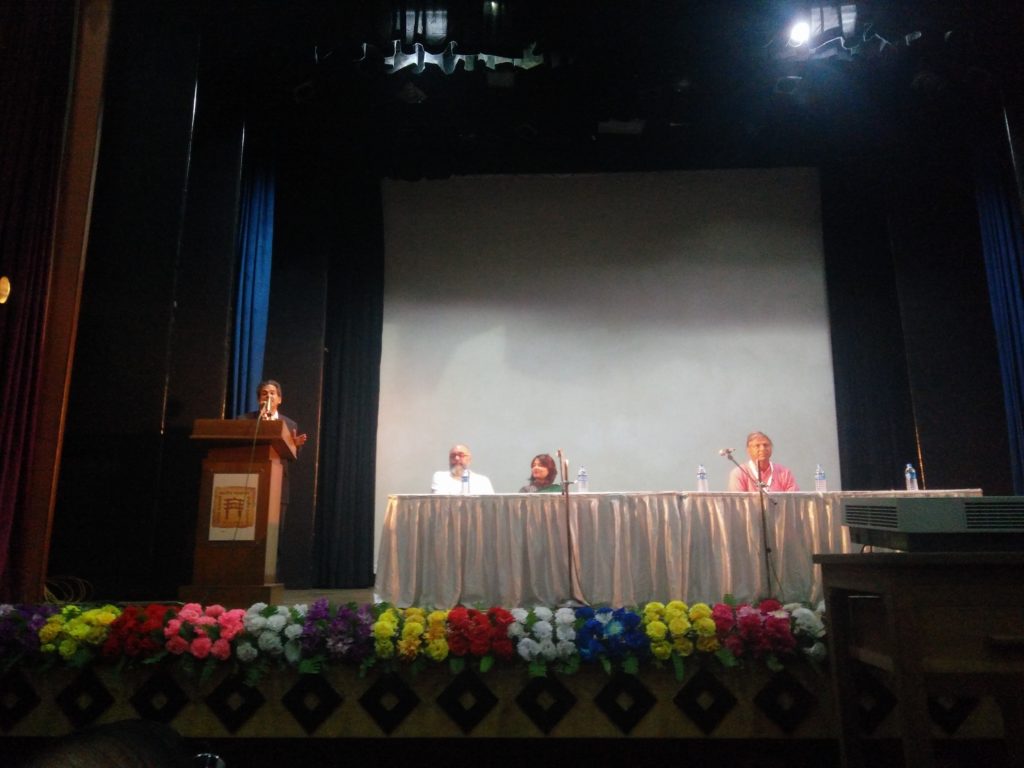
Mr. Rajesh Purohit, Director of Indian Museum Kolkata, addressing the group on the second day of the conference. Pic Credit: Koumudi Malladi
In his opening address, Dr. Saroj Ghose (Past President of ICOM and Past President of ICOM Asia Pacific) spoke about the importance of good leadership and its significance for an institution’s success.
He listed the following as the key factors a competent leader should embody:
- Academic excellence, an in-depth subject knowledge
- Forward-looking vision
- Astute communication skills
- Signature development
- Leading from the front
- Leaving a legacy of competent successors
Mr. Rajesh Purohit (Director of Indian Museum, Kolkata) emphasized on the interconnectedness between tourism and museums. Museums are major tourist destinations in many countries like the U.S.A, U.K. and Australia. However, museums in India need to explore this relationship further. There is an urgent need to make museums tourist-friendly as well as to make them economically viable. Since more than 33% of Indian museums are state-owned, a Public Private Partnership model needs to be examined. Attempts have been made in Maharashtra and Karnataka, however, not all of them have been successful. More such attempts are required. Museums are also severely underutilized as primary sources of information by schools, which is another area worth investing in. Again, there are a few organisations that are working in this area in pockets. We need more such organisations.
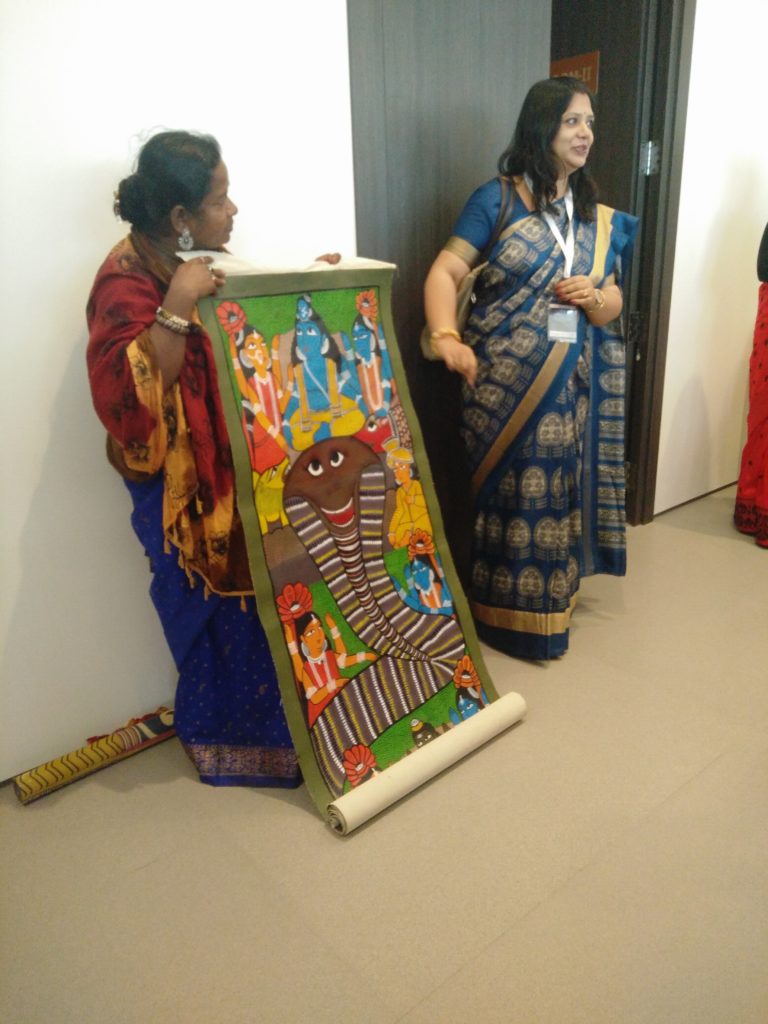
Chitrakar Monimala demonstrating the tradition of Patachitra scroll painting and the singing tradition associated with it translated into English by a member of the organising committee. Pic Credit: Koumudi Malladi
Professor Sarit Kumar Choudhuri (Director, Indira Gandhi Rashtriya Manav Sangrahlaya, Bhopal) highlighted the unique model followed in their museum. One of the key goals is to link communities and preserve their heritage in an economically viable manner. A successful way of achieving this is to have the tribal artists working within the museums. A model, which is also followed by other craft and indigenous art museums like The Crafts Museum, Delhi and Living and Learning Design Center at Kutch, Gujarat.
While Prof. Sarit spoke about the economic side of entrepreneurship, Professor Amareswar Galla (Executive Director, International Institute for Inclusive Museums, Australia) spoke about the societal impact of entrepreneurship. He laid the importance on empathy, ethical engagement, evidence-based research, and evaluation. Stakeholder mapping, stakeholder code of ethics and stakeholder manual for participation are best practices that pay off in the long run, stressed Professor Galla.
Dr. Abduraheem (Head of Department of Department of Museology in Aligarh Muslim University) addressed the challenge of the lack of trained professionals that most state-owned and small private museums face today. Outsourcing area expertise and skills is an investment made with long-term returns. He said that the subject (entrepreneurship) should be included in the curriculum of museology and heritage studies. “We must ensure proper guidance for facilitating practical knowledge in an ethical manner”.
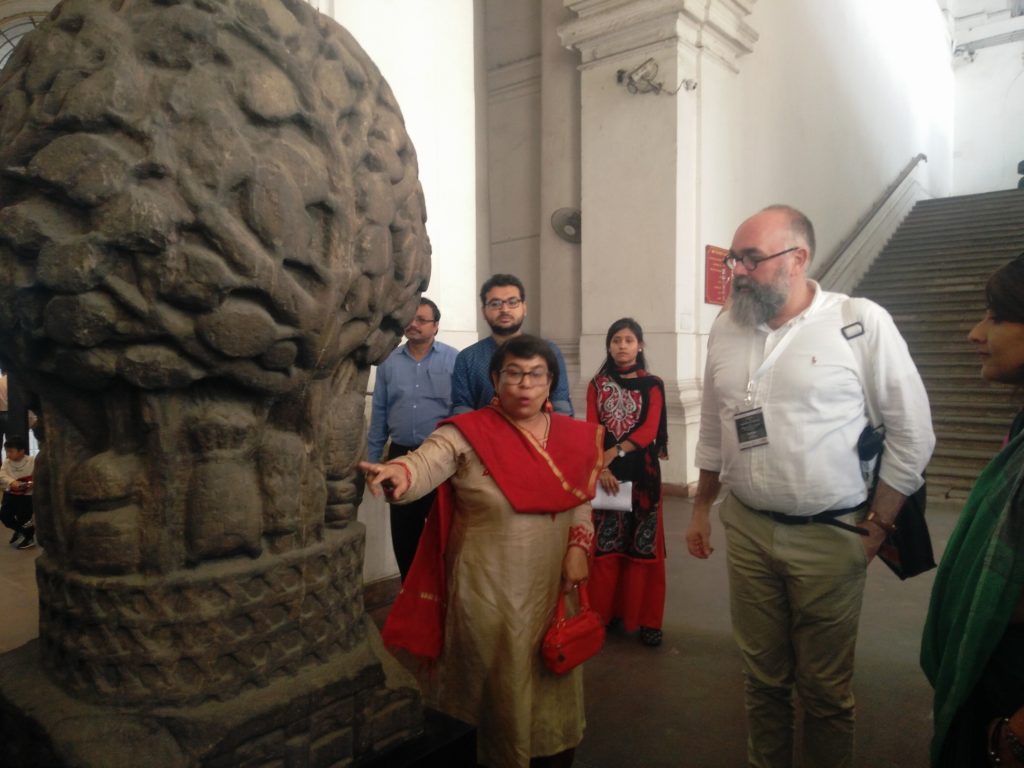
Senior curator at Indian Museum Kolkata during a curated walk through the museum for the conference participants. Pic Credit: Koumudi Malladi
Case studies across the world
Case Study 1 – Mrs. Andrea Katerina (Deputy Director of External Relations, Minnesota Historical Society, USA) spoke about how many cultural organizations face the same problem of maintaining permanent funding. In her state, many heritage organizations – natural, cultural, historical heritage – formed coalitions and lobbied for an increase in state sales tax to support the heritage sector. Now 0.375% tax delivers 240 million dollars per year to the heritage sector in Minnesota.
Take away – Organizations should look for common grounds and form affiliations and alliances for a better sharing of resources and towards creating a greater impact.
Case Study 2 – Professor Sanghamitra Basu (IIT Kharagpur) shared experiences related to heritage structures in West Bengal. Pathra, a riverside temple village in West Medinipur, West Bengal, has many unprotected heritage structures. By involving the community in identification and documentation process, the local awareness was increased.
Take away – Involving local resources and community helps in documentation and creating awareness which in turns helps preservation especially with heritage tourism on the rise.
Case Study 3 – Dr. Deborah Thiagarajan (Honorary Director, Dakshina Chitra Museum, Chennai) spoke about the creation of Dakshina Chitra and keeping the main stakeholders (the village residents) at the centre of the entire process.
Takeaway – Design thinking while setting up a museum or a programme creates the desired impact and leads to future success.
Case Study 4 – Dr. Paul Frey (General manager, KHM-Museumsverband, Austria) laid emphasis on the entrepreneurial attitude which is applicable to museums – upcoming or established. Entrepreneurship in the museum sector can be taken not necessarily to mean maximization of profit, but rather a maximization of collections, research, audience engagement, and its other primary goals. Resources will always be limited and the challenge is how to manage them. This is the chance for entrepreneurial opportunity.
Take away – Money and resources are not the impetus for entrepreneurship in the museum, but rather the result of such activity. Take responsible risks and don’t fear failure. In order to sustain our sector, we must re-invent ourselves as businesses.
This article has been compiled by the ReReeti editorial team with inputs from the contributors mentioned below.
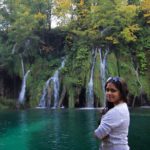 Koumudi Malladi is an Architect by qualification and an Art Historian by choice. She loves to explore the cultural heritage of India and explore contemporary perspectives of understanding it. She loves to visit and work with various museums across the world in an attempt to understand better techniques to bring the cultural heritage closer to the visitors.
Koumudi Malladi is an Architect by qualification and an Art Historian by choice. She loves to explore the cultural heritage of India and explore contemporary perspectives of understanding it. She loves to visit and work with various museums across the world in an attempt to understand better techniques to bring the cultural heritage closer to the visitors.
 Sarah Lamade is a Fullbright scholar, researcher and freelance writer based out of Pondicherry. Her background is in Anthropology and Museum Studies and she is working towards a career as a cultural consultant. She aims to support museums as inclusive and engaging educational spaces for dialogues which cut across boundaries.
Sarah Lamade is a Fullbright scholar, researcher and freelance writer based out of Pondicherry. Her background is in Anthropology and Museum Studies and she is working towards a career as a cultural consultant. She aims to support museums as inclusive and engaging educational spaces for dialogues which cut across boundaries.
ReReeti works with museums, galleries and heritage sites across India to plan strategies, design systems and implement programmes to increase audience engagement and institutional/ company visibility. Email us at info@rereeti.org for a free consultation or to collaborate on an upcoming exhibition.







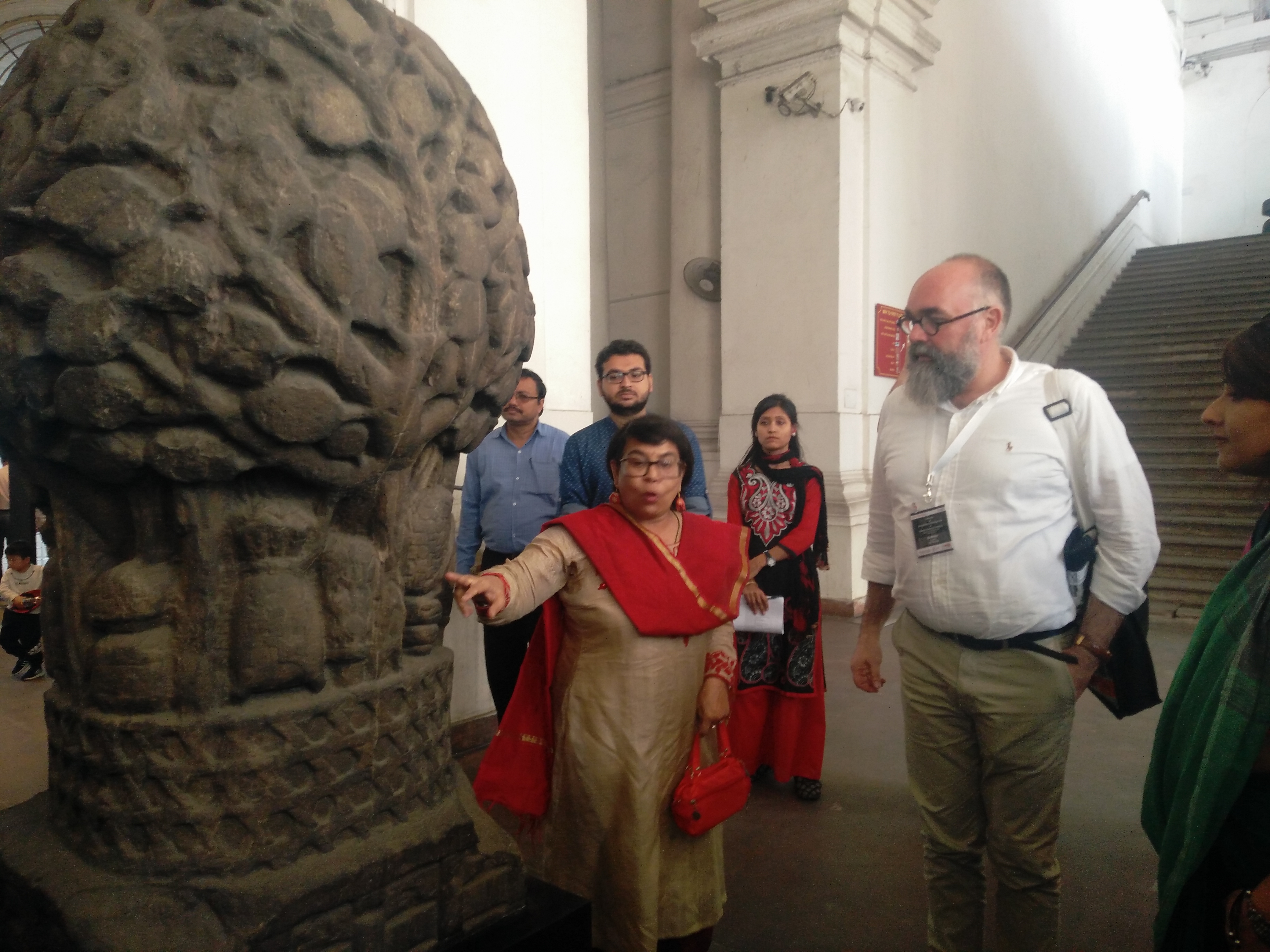
Recent Comments